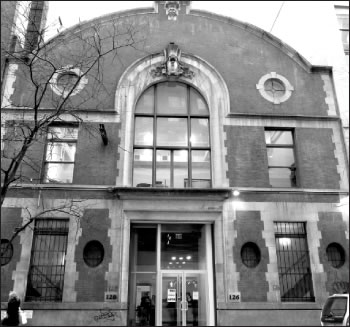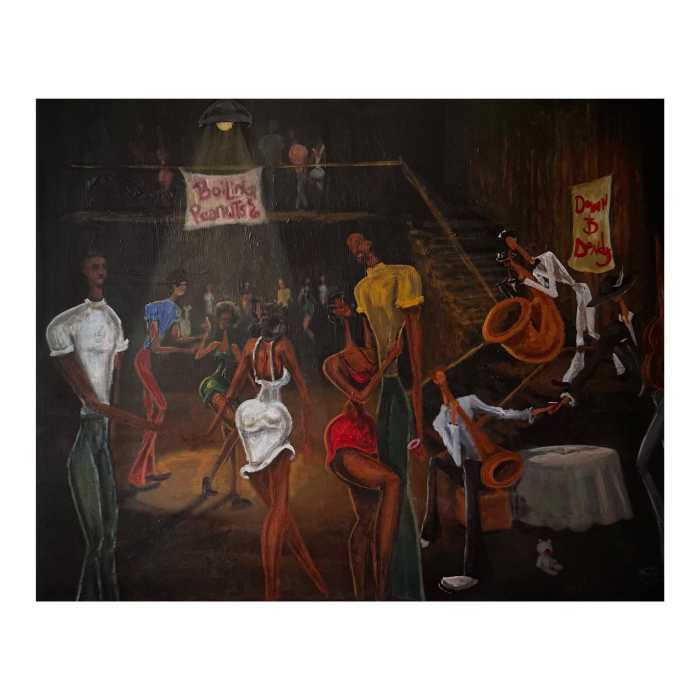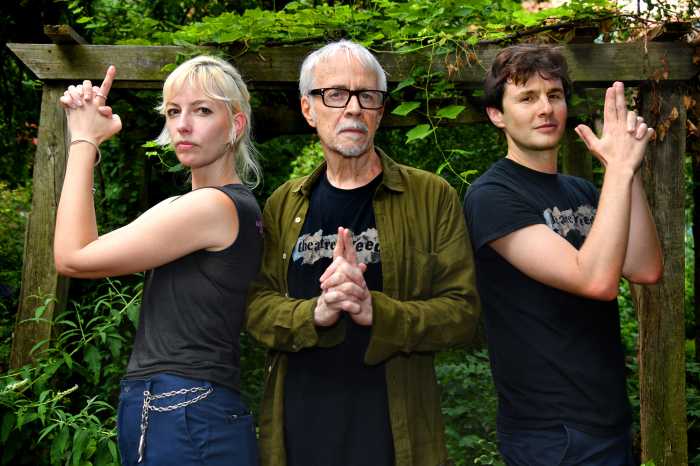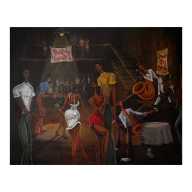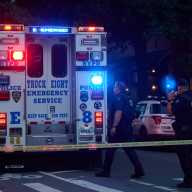By Bonnie Rosenstock
When Peridance Center opened its doors for classes on Dec. 21 at 126-128 E. 13th St. between Third and Fourth Aves., a new chapter unfolded in its 26-year history at an address rich in New York City history.
Artist/sculptor Frank Stella had his studio here from 1978 to 2005. It had been the Van Tassell & Kearney auction mart for the sale of horses, carriages and harness (every Tuesday and Friday) at the turn of the 20th century. Other barns still exist in the city, but this is the only extant building specifically designed to sell horses. The structure served as a training center for women assembly workers during World War II.
After the Jardine, Kent & Jardine-designed 1903 Beaux Arts building was sold in 2006, preservationists and neighborhood activists worked tirelessly to save it from the wrecking ball. It appears they can breathe a sigh of relief.
When a consortium of realtors bought the three-story structure for somewhere between $10 million and $12 million, they proposed to replace it with a seven-story apartment house. The property also included the 12th St. modern apartment building side, where Stella resided; it is said he used to be able to pass through the adjoining buildings, though the connection is now closed off.
There was a tremendous outpouring of support for landmark designation, recounted Andrew Berman, executive director of the Greenwich Village Society for Historic Preservation. While a hearing on landmark designation is currently calendared by the Landmarks Preservation Commission, no date has been set for a vote, stated an L.P.C. spokesperson.
Meanwhile, the owners voluntarily got the building listed on the State and National Registers of Historic Places and then sold a “preservation easement” to the Trust for Architectural Easements. As Berman explained, this meant the owners gave up the rights to alter the exterior or build on it in any way that is inconsistent with Department of the Interior historic preservation guidelines. In exchange, they get a big tax write-off.
“However, unlike New York City landmark designation, there is no public review or enforcement mechanism for this,” Berman said. “Instead, the Trust, a private group, is responsible for making sure that the terms are adhered to and for enforcing them. While the listing, the preservation easement and the long-term lease to Peridance seem to indicate the building is safe for the foreseeable future and the demolition/seven-story condo we fought to stop are off the table, we are still pushing for landmark designation, which puts in place the best guarantee that the building will be preserved in perpetuity.”
It took almost three years to completely gut and renovate the interior, said Israeli-born Igal Perry, artistic director of Peridance since he founded it in 1983, and an East Villager for 33 years.
“Through the intervention of preservationists, the owners decided to rent it and preserve this historic building,” Perry said. “We were really lucky to find it.”
Perry has retained as much of the interior as possible without compromising the needs of his dance students. Concealed support beams replaced the columns on the second floor, where Stella worked, and the once open space is now divided into column-free studios with bouncy sprung floor.
The brick walls, which were covered with plaster and paint, have been exposed. Development director Yarden Ronen pointed out the deep hollows in the bricks left by supports from which Stella hung his paintings.
“BED ROCK” has been scrawled across one wall in bright red paint as a reminder of “the painstaking job,” said Perry. They also preserved the original roof, freshly painted, with its long, rectangular skylights and high ceilings ranging from 14 to 30 feet, “perfect for high jumping and partnering,” said Ronen.
While they were excavating 14 feet down in the basement to create a third functional floor for additional dance studios, they noticed indentations and tracks where the horses were walked. The auction mart was one flight above; the stables were in an adjacent building. They kept two large foundation stones, which have been placed near the left side of the entrance as decorative sculptural forms.
Peridance Capezio Center is a newly formed partnership between Peridance and the premier manufacturer of dance clothing.
“Peridance comes from the dance education part of the partnership, and Capezio is the business side,” said Perry. “The merger is to create a pilot space in New York and to have it as a model to expand to other places, even internationally. But first, we need a couple of years here.”
The wiry Perry, former dancer, teacher and choreographer, was a 2007 inductee into the Dance Library of Israel Hall of Fame.
The center houses six large, climate-controlled, soundproof, state-of-the-art studios, a 200-seat studio theater for the Peridance Contemporary Dance Company as well as for outside performers, a cafe and a Capezio boutique.
The school offers more than 300 weekly open classes for all levels in ballet: modern (Graham-, Limon-, Horton- and Taylor-based), contemporary, theater, jazz, hip-hop, house, tap, flamenco, Pilates, tai chi and the popular PeriChild Program from toddlers to teens.
Additionally, Peridance is now the home of Baila Society (salsa and Latin dance) and Djoniba Dance & Drum Centre (ethnic and African dance).
Perry has negotiated a 10-year lease with a five-year extension. He hopes to buy the building someday.
“Everybody says they feel good studying here, that the atmosphere is wonderful,” he said, beaming. “It’s my dream come true.”



